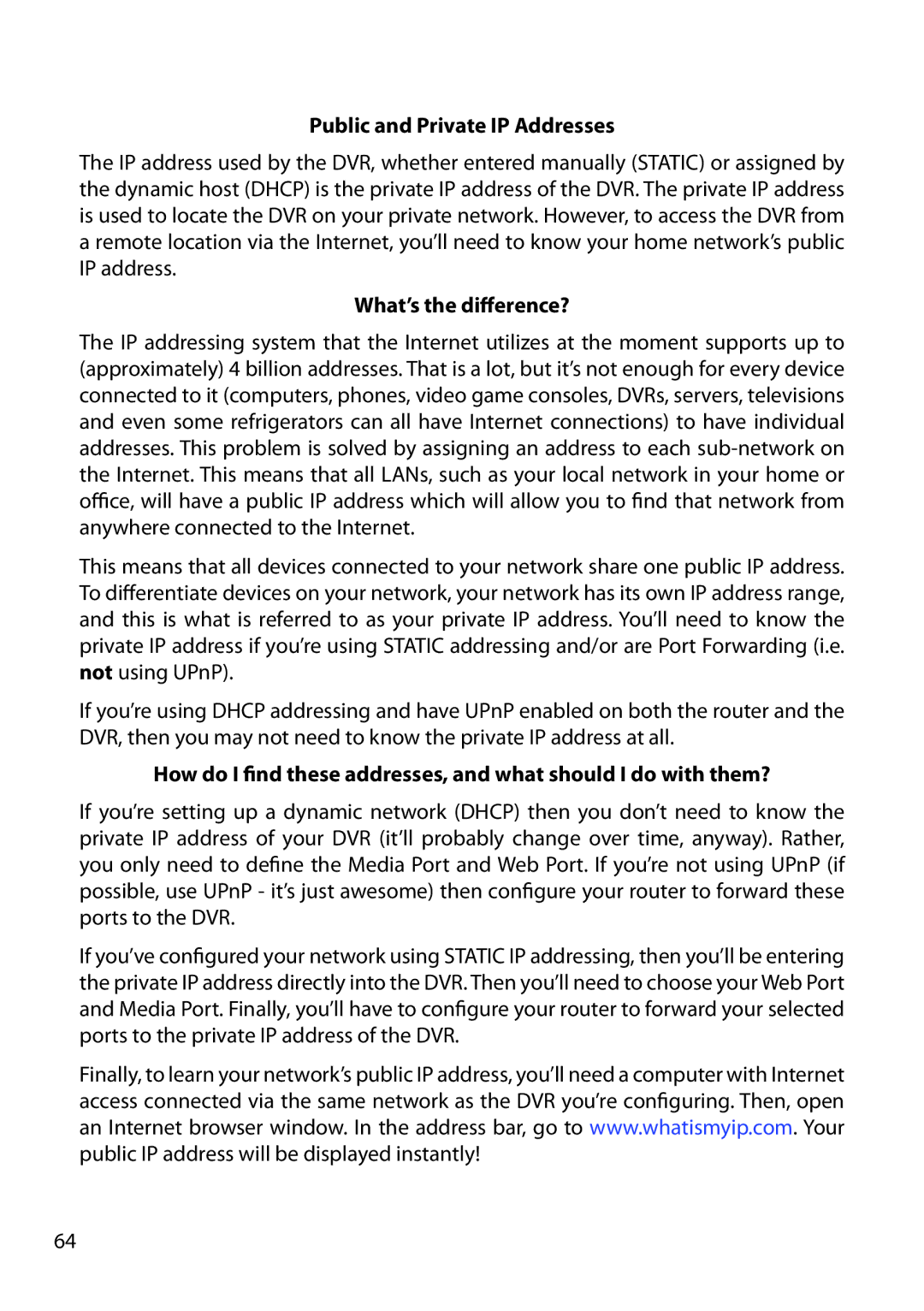Remote Access: IP addresses
Public and Private IP Addresses
The IP address used by the DVR, whether entered manually (STATIC) or assigned by the dynamic host (DHCP) is the private IP address of the DVR. The private IP address is used to locate the DVR on your private network. However, to access the DVR from a remote location via the Internet, you’ll need to know your home network’s public IP address.
What’s the difference?
The IP addressing system that the Internet utilizes at the moment supports up to (approximately) 4 billion addresses. That is a lot, but it’s not enough for every device connected to it (computers, phones, video game consoles, DVRs, servers, televisions and even some refrigerators can all have Internet connections) to have individual addresses. This problem is solved by assigning an address to each
This means that all devices connected to your network share one public IP address. To differentiate devices on your network, your network has its own IP address range, and this is what is referred to as your private IP address. You’ll need to know the private IP address if you’re using STATIC addressing and/or are Port Forwarding (i.e. not using UPnP).
If you’re using DHCP addressing and have UPnP enabled on both the router and the DVR, then you may not need to know the private IP address at all.
How do I find these addresses, and what should I do with them?
If you’re setting up a dynamic network (DHCP) then you don’t need to know the private IP address of your DVR (it’ll probably change over time, anyway). Rather, you only need to define the Media Port and Web Port. If you’re not using UPnP (if possible, use UPnP - it’s just awesome) then configure your router to forward these ports to the DVR.
If you’ve configured your network using STATIC IP addressing, then you’ll be entering the private IP address directly into the DVR. Then you’ll need to choose your Web Port and Media Port. Finally, you’ll have to configure your router to forward your selected ports to the private IP address of the DVR.
Finally, to learn your network’s public IP address, you’ll need a computer with Internet access connected via the same network as the DVR you’re configuring. Then, open an Internet browser window. In the address bar, go to www.whatismyip.com. Your public IP address will be displayed instantly!
64
